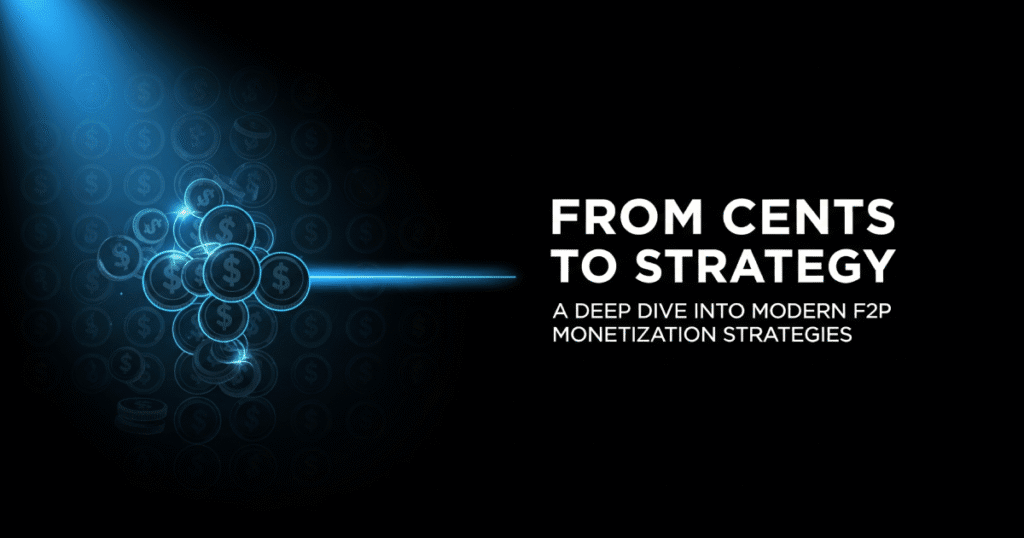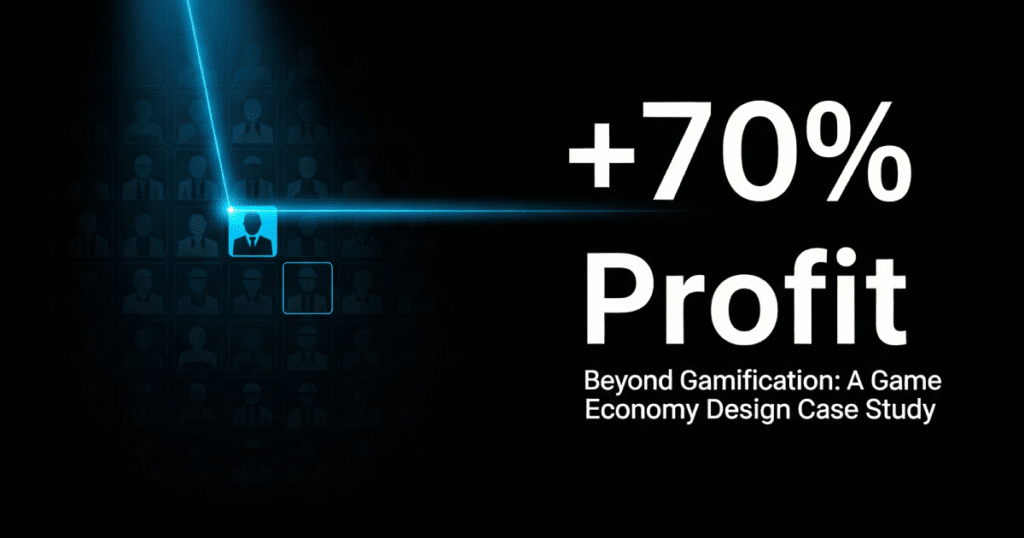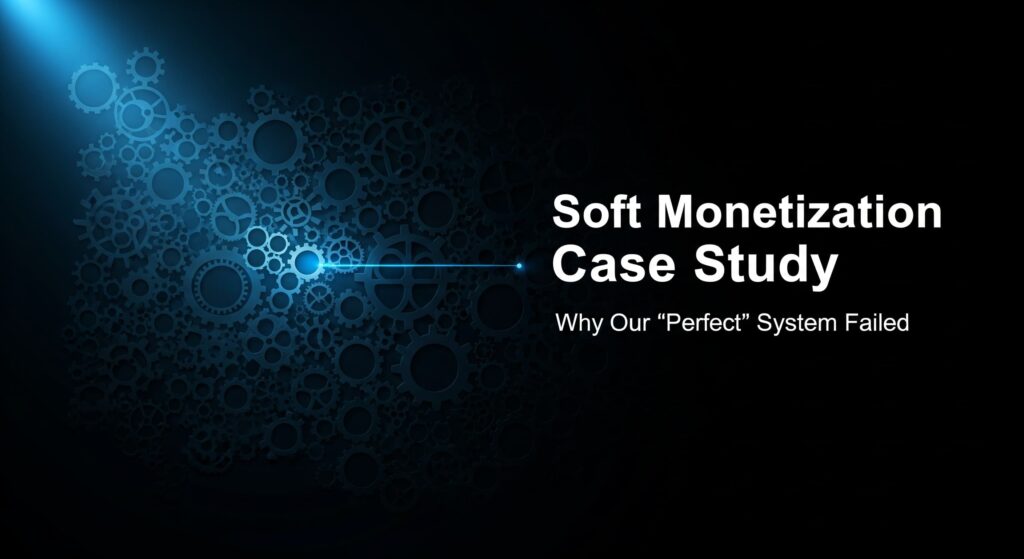Introduction
In the free-to-play (F2P) universe, effective f2p monetization strategies are the engine that keeps the stars aligned. But for many studios, it’s a black box of metrics, guesswork, and fear—fear of alienating players, fear of failing to turn a profit. We often hear about the holy grail: LTV > CPI. If a player’s lifetime value (LTV) is greater than the cost per install (CPI), you’re successful. Right?
Wrong.
After more than a decade designing and balancing game economies for titles from hyper-casual to hardcore, I’ve seen firsthand that this simple formula is dangerously incomplete. A game can have a positive LTV-to-CPI ratio and still drive a studio into the ground. True success in F2P monetization isn’t about a single formula; it’s about a holistic strategy built on three fundamental pillars: Strategic Profitability, Audience-Monetization Fit, and Value-Driven Design.
This article will break down these three pillars, moving beyond surface-level metrics to give studio heads, product managers, and game designers a practical framework for building monetization systems that are not only profitable but also fair and engaging for players.
Pillar 1: True Profitability in Your F2P Monetization Strategy
The first and most common trap is mistaking product profitability for company profitability. You might spend $1.00 to acquire a user who generates $1.20 in revenue. That’s a 20% margin—a success! But what if the addressable market for users at that price point is only 10,000 people? Your $2,000 profit won’t even cover a fraction of your team’s monthly burn rate.
Strategic Profitability means understanding that your monetization model must not only be profitable on a per-user basis but also scalable enough to sustain and grow the entire company.
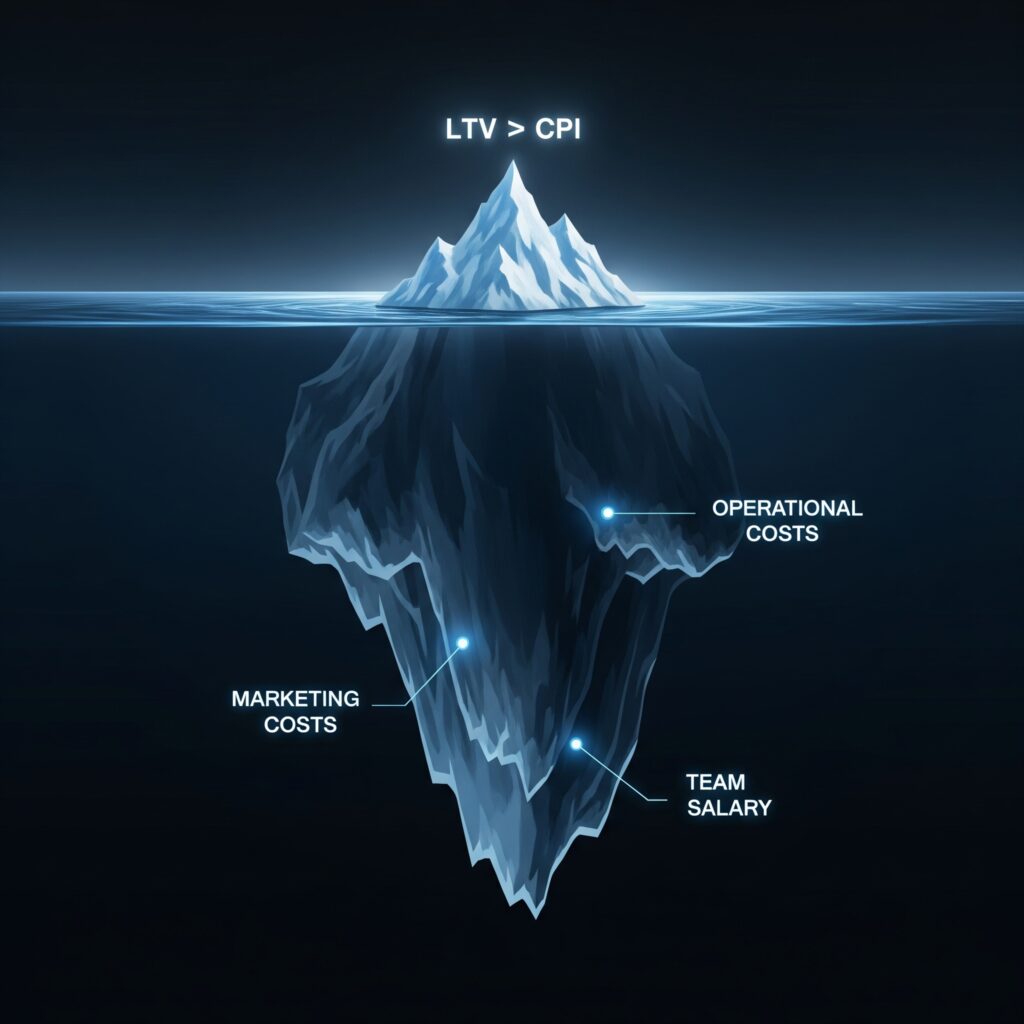
How to Assess Strategic Profitability at Soft Launch:
Getting this right starts long before your soft launch, with deep market research and producer expertise. It’s about developing an informed perspective—what I call “nadyvlenist” (a Ukrainian term for being “well-watched” or “well-versed”)—by constantly monitoring competitors, their A/B tests, and audience reactions across different GEOs.
However, once you have your soft launch data, the focus shifts to validation. Here’s what to look for:
- The Core Loop Test: Before you even look at revenue, look at retention. Do players come back on Day 2? Do they complete the tutorial? If your D1 retention is 5% when genre benchmarks are 40%, your core gameplay loop is failing. No amount of monetization wizardry can fix a boring game. The first goal is to validate that the core experience is fun.
- The Profitability Depth Test: If LTV is just barely inching above CPI, you have a major red flag. This thin margin gives you no room for error, no budget for market fluctuations, and no real capacity to scale. True potential lies in a healthy margin that can withstand the rising CPIs that inevitably come with scaling.
- Analyze Your 5%: In almost every F2P game, a small percentage of players drive the majority of the revenue (the Pareto principle). Find this segment. In a recent consulting project for a game that was deemed unprofitable, I discovered that 5% of players were generating 80% of the income. Their behavior was a roadmap to the game’s hidden potential. They loved the core gameplay but were running out of content designed for a 7-day experience. By analyzing them, we made a strategic pivot: we transformed the game from hyper-casual to casual, extending the content horizon to 30+ days. Within two months, the game became profitable. We didn’t just find profitable players; we changed the product to serve them.
Pillar 2: Monetization Fit Through Player Segmentation — The Art of Not Being Toxic
The second pillar is about empathy and context. A monetization mechanic is not inherently “good” or “bad”; its value is determined by the audience it’s presented to. A mismatch here can be instantly toxic.
Imagine playing a deeply immersive, narrative-driven RPG like Baldur’s Gate 3, and right before the final boss, a 30-second interstitial ad for another game pops up. It’s absurd. It shatters the core value proposition of the game: immersion.
Conversely, a paywall to access the game in the first place (the premium model) or to buy a massive DLC is perfectly acceptable for this audience. It aligns with their expectation, much like buying a book.
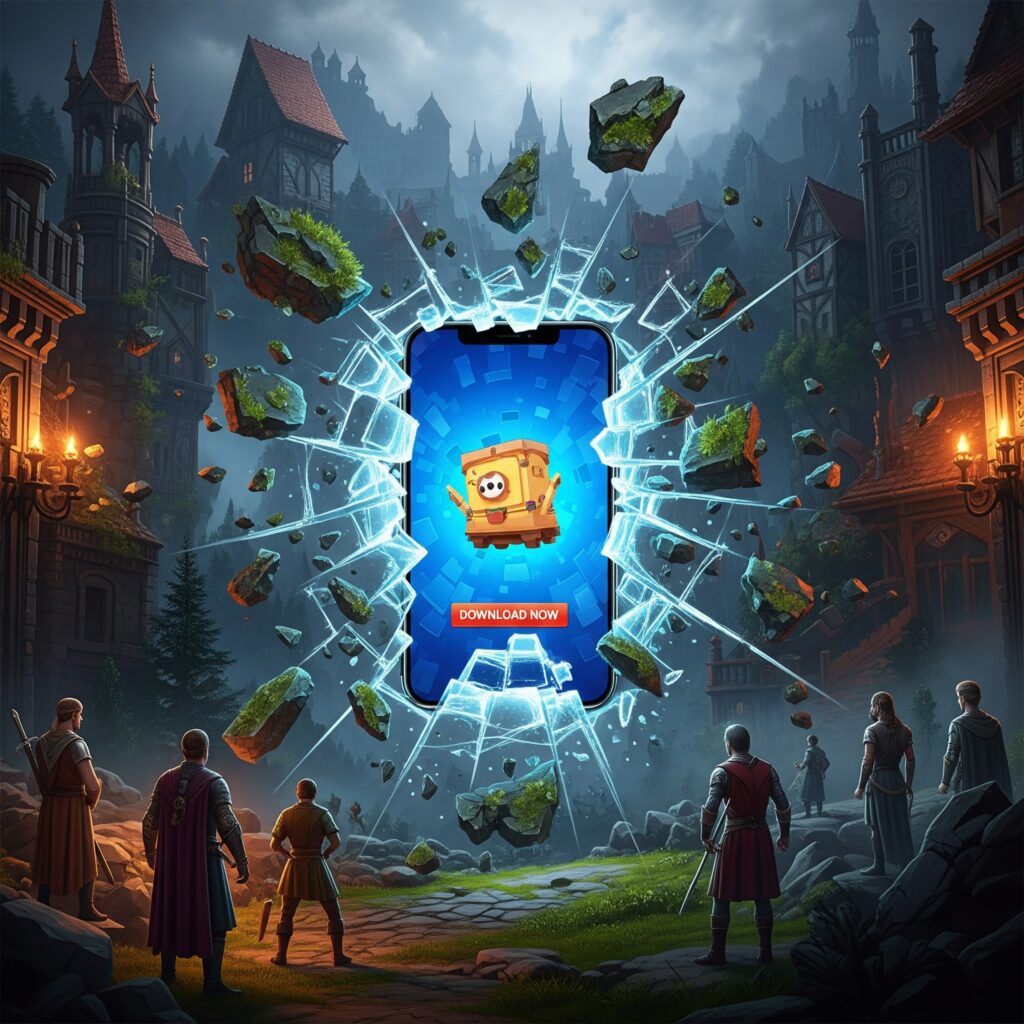
Key Principles for Achieving Fit:
- Respect the Core Motivation: Why is your player here? Are they seeking a slow, thoughtful narrative journey? Then monetizing progression speed is counter-productive. Are they seeking a competitive, skill-based challenge? Then selling pay-to-win advantages will destroy the integrity of the competition.
- Look for Harmony, Not Just Revenue: The gold standard for monetization is when it feels like a natural part of the game world. Early Supercell games like Clash Royale are a masterclass in this. The core gameplay is free, generous, and skill-based. You can be competitive without spending a dime. Their monetization genius lies in creating a powerful psychological desire to spend.
- The Supercell Model: The system showers you with “potential”—new hero cards you unlock from chests. But to upgrade those heroes, you need a complementary resource: gold. The game manages the income and outcome of these two resources perfectly. You have a surplus of exciting new potential (cards) and a deficit of the key to unlock it (gold). This creates a powerful, internal motivation to buy gold to realize the potential you already hold in your hands. It’s a choice driven by value, not a wall built by force.
Pillar 3: Value-Driven Game Economy Design — Engineering Desire, Not Coercion
This brings us to the final and most intricate pillar: designing an economy from the ground up to be a “soft monetization” system based on choice. This is where system design becomes an art form.
A Blueprint for a “Soft” Economy:
As a system designer, I live in spreadsheets. Modeling the flow of resources is critical to forecasting player behavior. The process starts with a simple question: What is the intended content horizon for our game? Is it a 10-day experience or a 3-year “game as a service”?
The answer dictates everything. Your job is to “spread” your available content (new levels, heroes, items, quests) across that timeline, using the game’s economy as your primary tool.
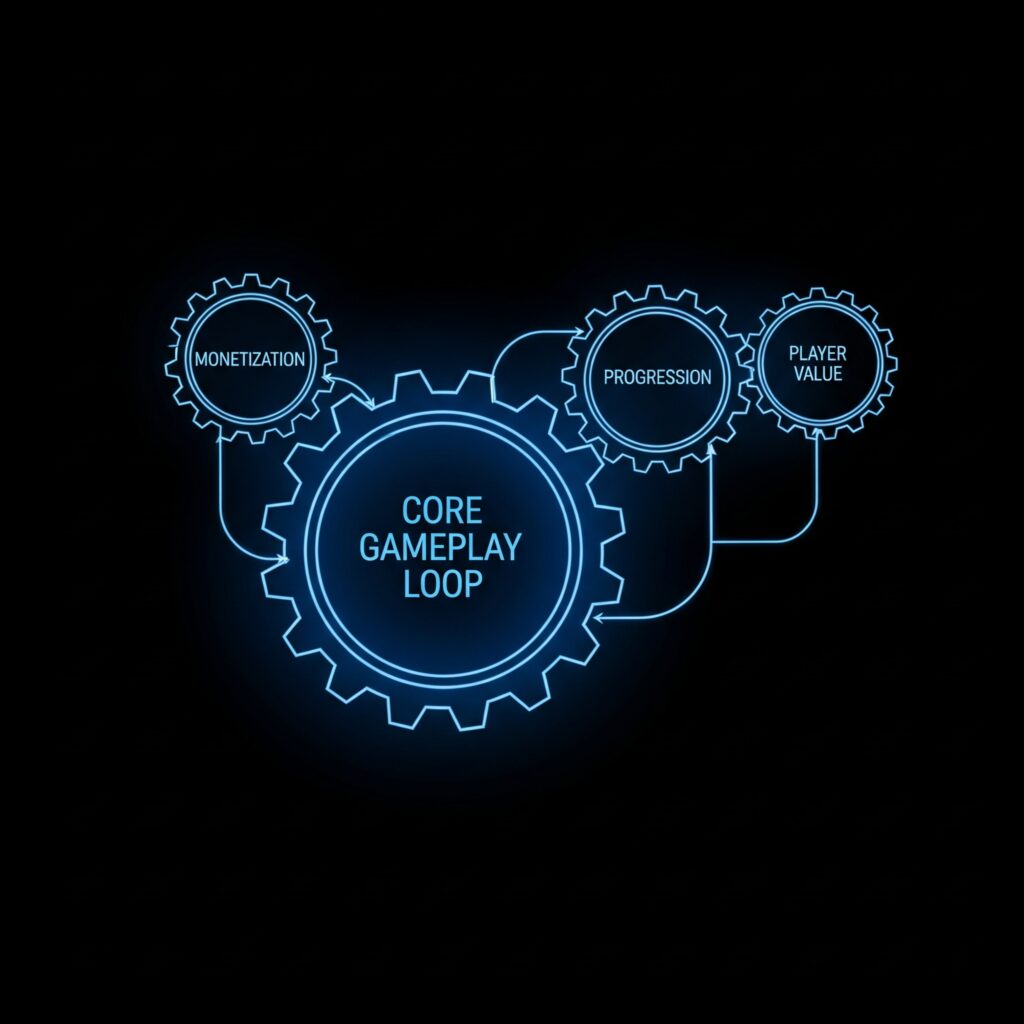
- Master Your Income & Outcome: Forget “sources and sinks.” Think in terms of what income the player receives (currency, rewards) and what outcome is required (upgrade costs, entry fees). By modeling this flow in a spreadsheet, you can simulate a player’s daily experience and control the pace of their progression. Your goal is to manage this pace to avoid the ultimate player retention killer: boredom.
- The Two-Currency Rule: Most healthy economies rely on a multi-currency system, typically with two main roles:
- The Soft Currency (e.g., Gold): This is your inflationary workhorse. Players should earn it in ever-increasing amounts. Earning 100 gold on Day 1 and 1,000,000 on Day 100 provides a powerful sense of progression.
- The Hard Currency (e.g., Gems): This currency must be stable and hold its value. It should be given out sparingly as a reward, demonstrating that it’s attainable, but its primary source should be IAP. This currency is the key to your premium offerings, and its high value is transferred to the items it can buy. To maintain fairness, these items should ideally be cosmetic, especially in competitive games.
- Balance Generosity with Deficit: How do you find the line between being generous and creating a need to spend? There is no magic formula. It requires expertise, constant playtesting (both internally and with users), and a deep feel for the game’s rhythm.
- A/B Test Your Assumptions: Once your game is live, A/B testing is your most powerful tool. In one of my lead roles on a major title that had been on the market for seven years, we faced the challenge of improving LTV in a mature economy. The common wisdom is to slow players down to encourage spending. We tested the opposite. We ran an A/B test where we accelerated player progression. The result? A significant, measurable increase in LTV. By giving our most engaged players more value, faster, they engaged more deeply and spent more in the long run. It proved that the best F2P monetization strategies are often about creating more joy, not more friction.
ConclusionBuilding successful F2P monetization strategies is one of the most challenging tasks in game development. It requires a rare blend of data science, psychology, and design artistry. By moving beyond simple metrics and embracing a holistic framework—one that prioritizes a company-level Strategic Profitability, a deep Audience-Monetization Fit, and an economy built on Value-Driven Design—we can create games that are not only commercially successful but are also beloved by the players who invest their time and money in them. The goal, after all, is not to coerce a single purchase but to build a relationship that lasts for years.

